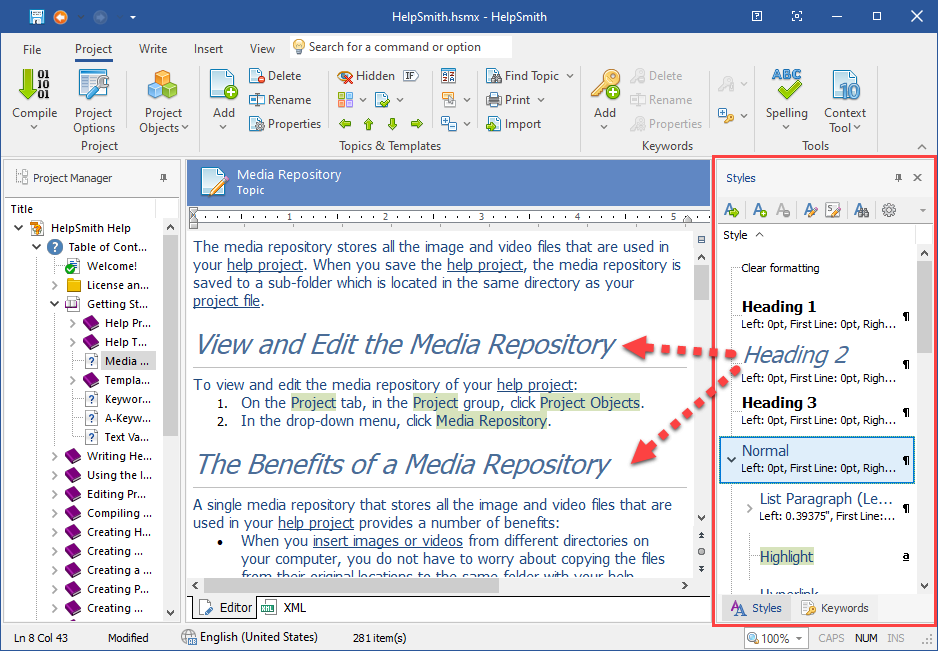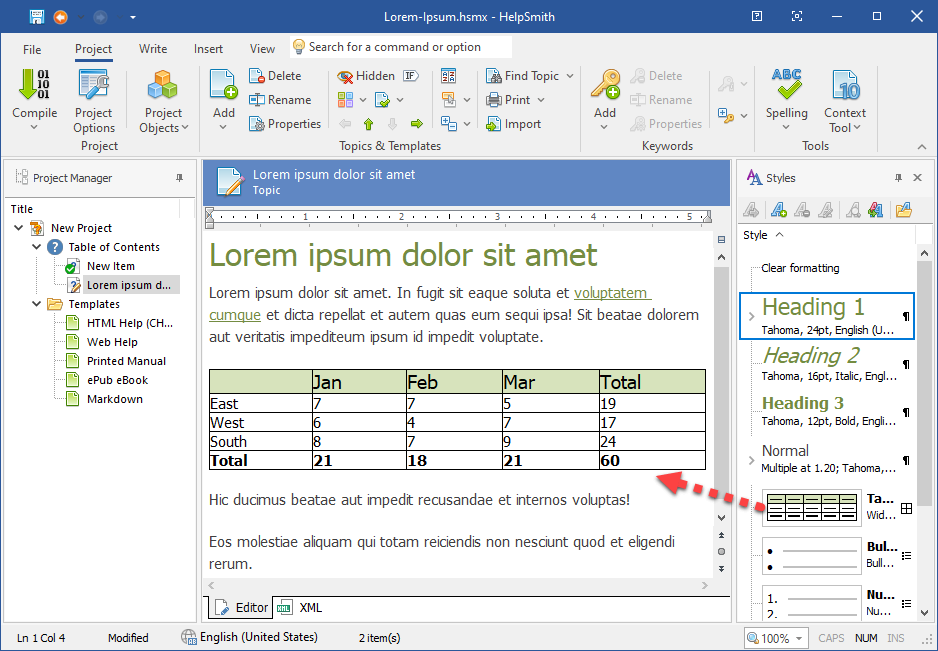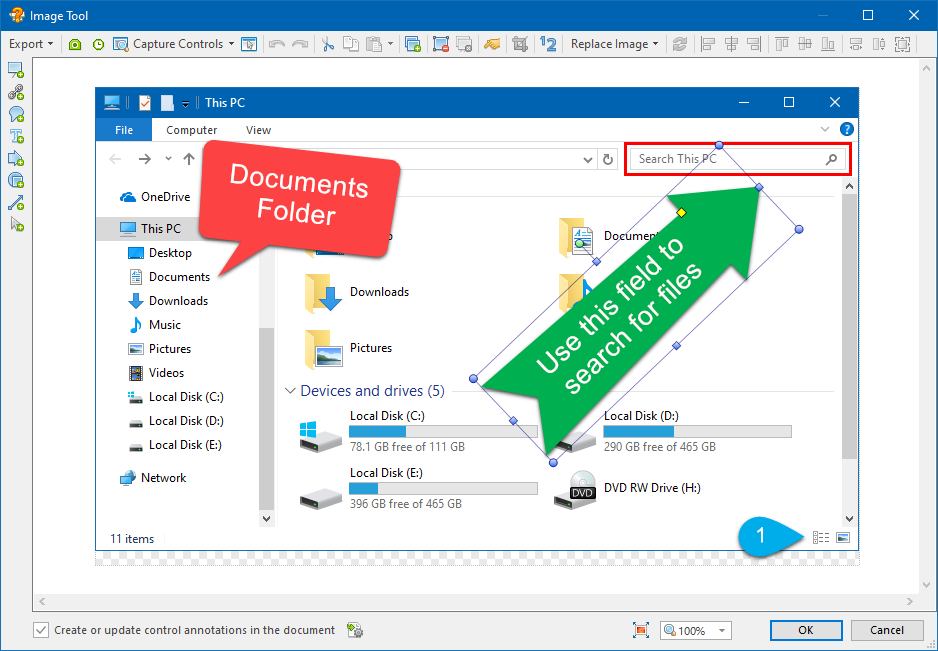We are pleased to announce the release of HelpSmith 10.1.1 (which you can download from our website) that adds an option to create Web Help systems which work not only on a web server, but can also be distributed and used on the local computer without a web server, includes an improved algorithm to find keywords in the Index, provides better compatibility with various web browsers, and other enhancements.
Create and Distribute Web Help Systems for Use on the Local Computer
In HelpSmith 10, we introduced the redesigned Web Help system format with a customizable frame-less layout, which makes it possible for the end-users to navigate across the topics without updating the whole webpage (thanks to the dynamic data loading through an AJAX request), and, at the same time, since the web help system works as a static HTML website without frames, it is also correctly indexed by Google, Bing, and other search engines.
However, if you need to create a Web Help system that will be accessed from the local computer directly, the mentioned approach will not work because the web browsers block AJAX requests and other functions for HTML files which are located and accessed locally through the file:// protocol. Therefore, HelpSmith 10.1.1 now allows you to use the static data loading option which provides an alternative way to load data, so the help system will work both on the web server and on the local computer!
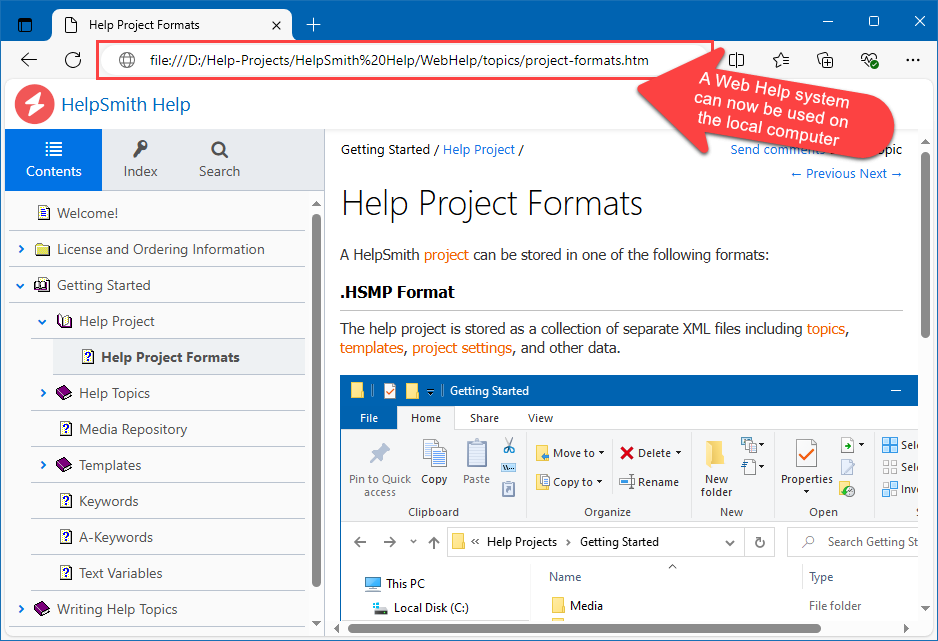
Remark: It should be noted that the Load data dynamically option is disabled by default, so your web help system will work correctly both on the web server and on the local computer. However, if you plan to use Web Help on a web server only, it is recommended to enable this option for faster loading of the TOC, search data, etc.
Using the Dynamic and Static Data Loading Modes
Dynamic Data Loading on a Web Server
You should enable the Load data dynamically option in case your Web Help system will be located and accessed from a web server only (through the http:// or https:// protocol), but not from the local computer.
- On the Project tab, click Project Options.
- In the Project Options dialog, in the left side, select the Web Help section.
- In the right side, enable (or disable) the Load data dynamically option.
- Click OK.
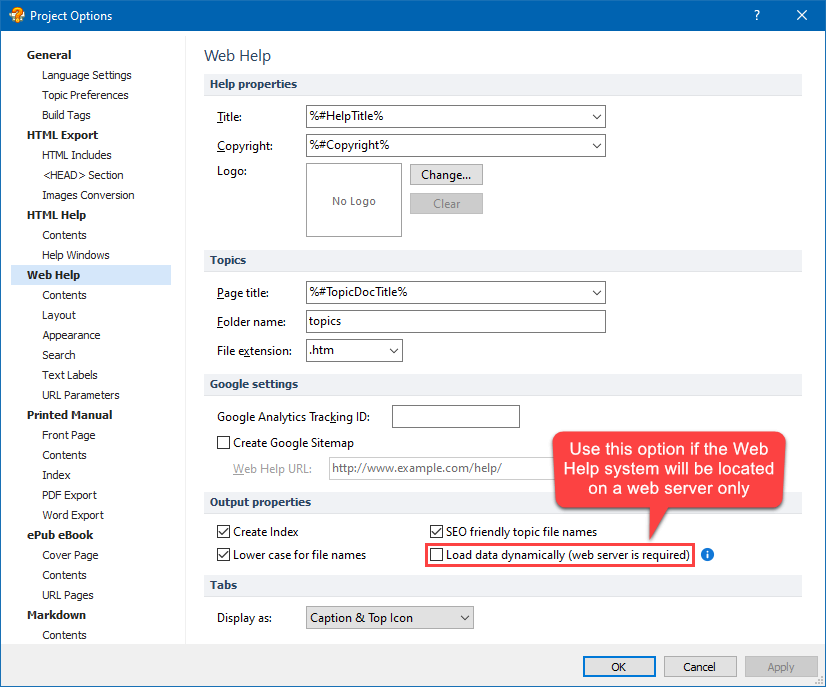
This mode provides faster loading of the help system (which can be important on a large help project) as it will be instantly displayed even if other data (such as TOC, keyword index, topic table, etc.) is being loaded. The full-text Search index will be loaded if the user has entered a search query. Also, when switching between topics, the help system will only load the topic’s content without the need to update the whole webpage.
Static Data Loading on the Local Computer
You should disable the Load data dynamically option in case your Web Help system will be located and accessed from the local computer (through the file:// protocol). While this mode provides correct work of a web help system on the local computer, it includes some minimal disadvantages.
For example, when the user visits another topic by selecting it in the TOC or by clicking on a hyperlink, it will re-load the whole web page including the header, TOC pane, topic’s content, etc. However, in this mode, the web help system will use special URL parameters to restore the current state of the TOC and other UI elements.
Remark: Please note that with the Load data dynamically option disabled, the Web Help system can also be located and accessed from a web server. In this case, the help system will statically load the data. At the same time, since the help system is accessed through the http:// (or https://) protocol, when switching between topics, it will still load the topic’s content dynamically without updating the whole webpage.
Create Documentation with the Most Powerful Help Authoring Tool
With HelpSmith 10.x, you can now write content in the exclusively designed word processor with true support for dynamic styles, quickly create and annotate images using the built-in Image Tool, generate topic drafts for the UI of your application, insert code blocks with syntax highlighting, automatically generate a list of related links for your topics, use the powerful options to import existing documents in different formats, work on a help project collaboratively with a version control system, and apply other numerous features which really take your documentation creation process to the next level.
Finally, thanks to this HelpSmith update, you can now create and supply a browser-based Web Help system which no longer requires a web server, so it can be easily distributed, for instance, within your company’s local network, used as a help file for a desktop application (as alternative to the .CHM help file), or even used on a computer without Internet connection!
Release Notes for HelpSmith 10.1.1
- Now you can generate a Web Help system that works on the local computer without a web server.
- The Index in Web Help now finds the specified keyword and its variations.
- The topic editor did not save the text style after selecting a fragment of text and entering new replacement text.
- When applying a reserved Paragraph List N style, it now sets the corresponding Level value to the selected paragraph(s).
- Inserting an image into the topic editor from the Clipboard did not work in some cases.
- Linking to a topic in a Web Help system by the Context number or textual ID did not work on iPhone.
- The style tree used the Descending sorting mode as the initial value.
- The “<” and “>” characters, contained in the titles of the Web Help’s UI elements (e.g. TOC pane, text labels, etc.), were not displayed.
- Fixed an issue with control characters which could be imported from an RTF file.
- Improvements for better support of High DPI display mode.
- Other enhancements and minor bug fixes.
How to Upgrade
If you have a license for HelpSmith 10.x (or for a previous version for less than a year), you can upgrade to the latest HelpSmith version (the same edition) for free. Otherwise, you can upgrade existing licenses to HelpSmith 10.x at a special price. To place an upgrade order, you can visit this link.
Download HelpSmith 10.1.1
You can download the latest HelpSmith version here.

